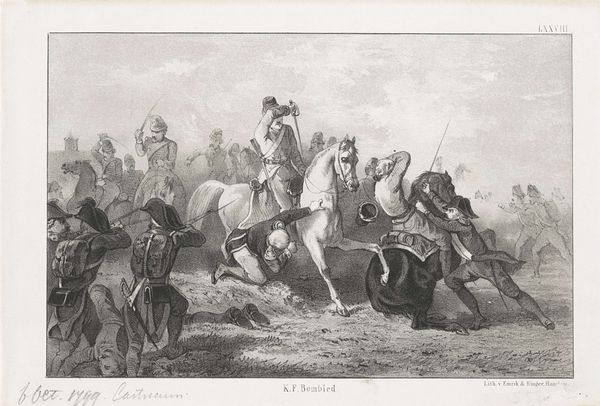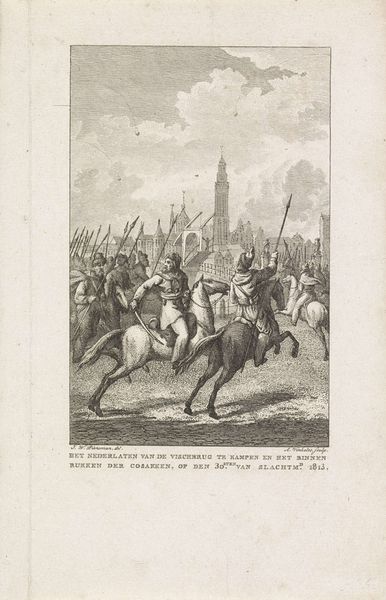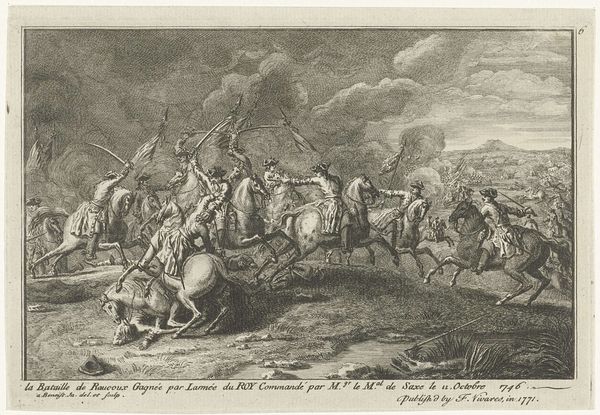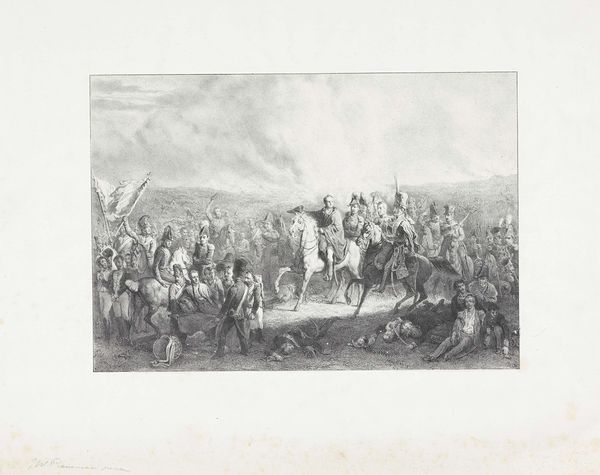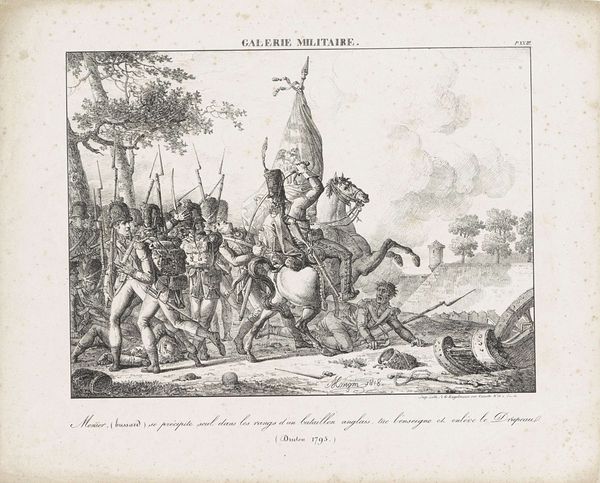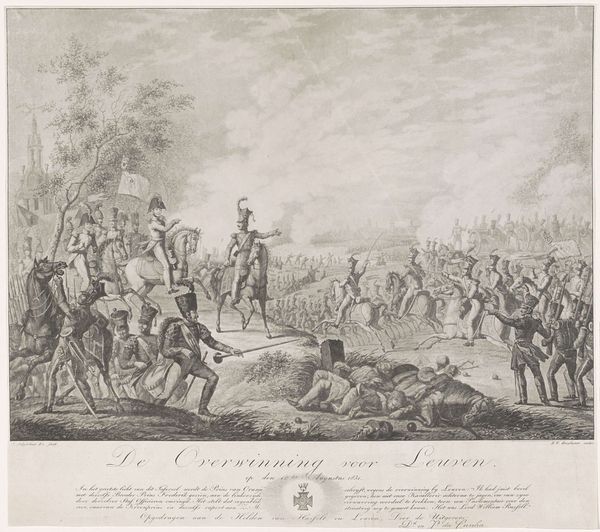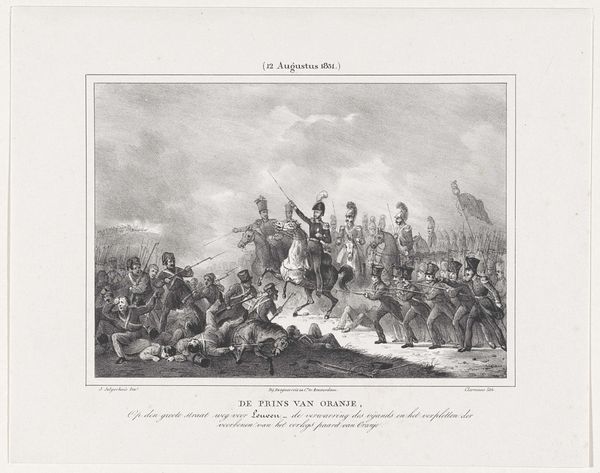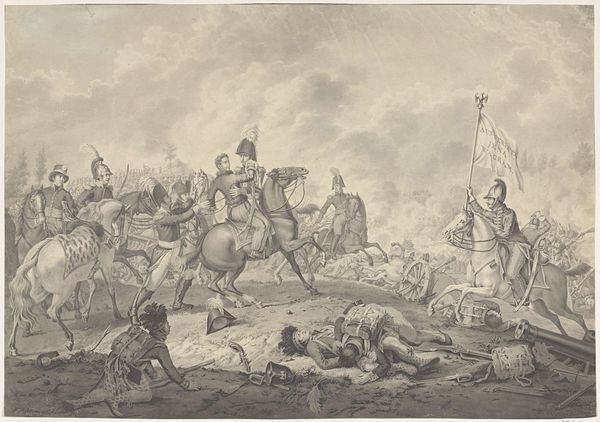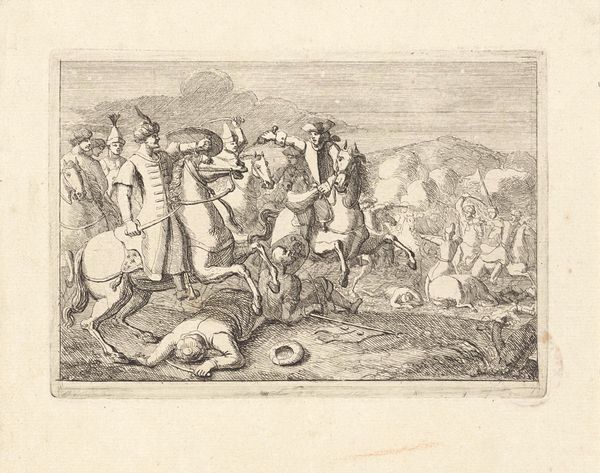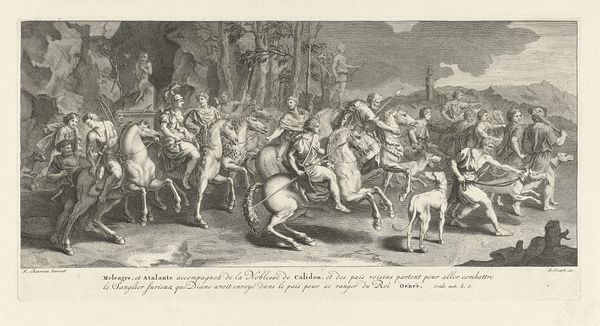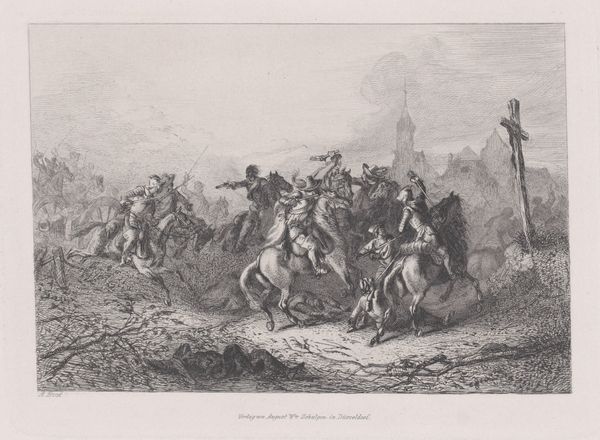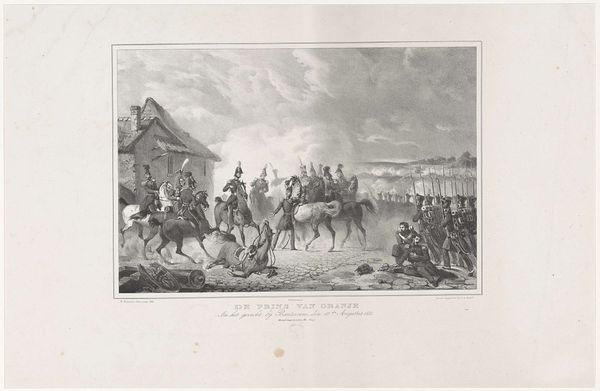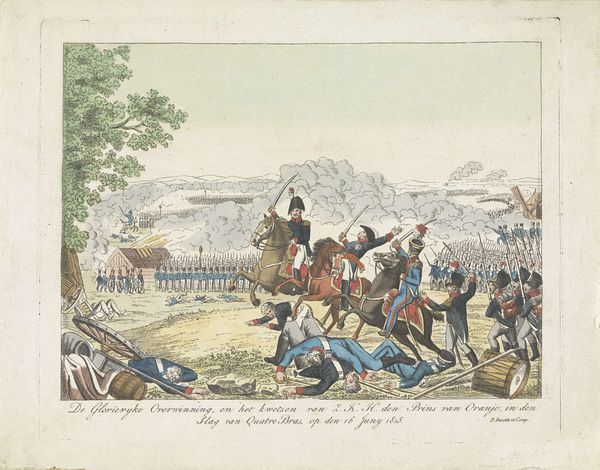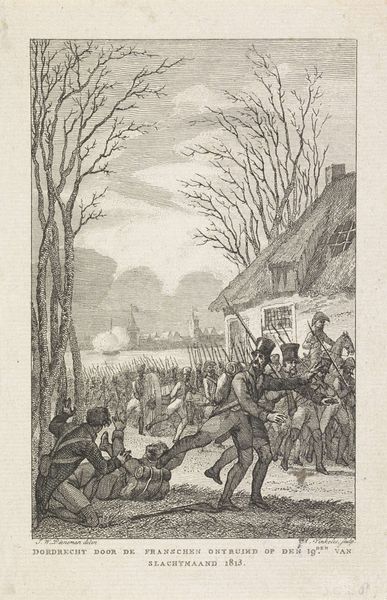
Prins van Oranje raakt gewond tijdens de slag bij Waterloo, 1815 1853 - 1861
0:00
0:00
Dimensions: height 163 mm, width 238 mm
Copyright: Rijks Museum: Open Domain
Curator: Here we have H.J. Dekker's "Prins van Oranje raakt gewond tijdens de slag bij Waterloo, 1815," made between 1853 and 1861. It's an etching, currently residing here at the Rijksmuseum. Editor: It's stark. The wounded prince amid a chaos of men and horses—all rendered in precise, almost brutal, lines. It speaks of a harsh reality behind the glorious facade of war. Curator: Indeed. It's a potent visualization of the battle, made well after the fact. What's interesting is how Dekker engages with the history and its public memory, more than a straightforward depiction of events. Note how he pulls the injured prince into the foreground, making him the focal point of Dutch heroism, really leveraging that sentiment. Editor: I am struck by how the means used in printmaking emphasize the graphic qualities. Look at the deliberate hatching; the linear strokes across each form suggests so much about texture: The coarse cloth, the shiny metal on the arms and canons, even the sweat and fear of the moment. This method underlines the physical labor embedded in war itself. Curator: That romantic element of the suffering hero is key, right? Remember, nationalism was a growing force in the 19th century. The Prince's sacrifice at Waterloo was, by this point, a foundational story for the Netherlands. This image contributes to that visual rhetoric, portraying him as essential for building Dutch national identity. Editor: The process also reveals the mass production possibilities. This wasn't about unique brushstrokes; this etching was made to be multiplied, disseminated. Consider how widely such a representation could shape public feelings regarding their Prince and feelings about nationhood. Curator: Absolutely. Dekker utilizes the heroic to solidify the state's authority, an extremely calculated message. Editor: It pushes us to ask how images such as these forge our understanding and relation to past historical moments, doesn't it? It goes beyond the representation to interrogate production methods. Curator: An image constructed as much about contemporary socio-political objectives, not as historical truth. Editor: Right, revealing the power imbued within its materiality, leaving us much to consider.
Comments
No comments
Be the first to comment and join the conversation on the ultimate creative platform.
